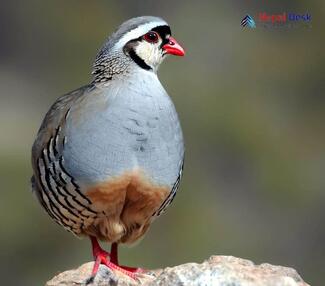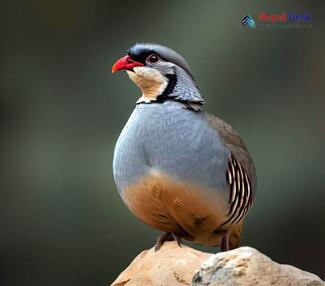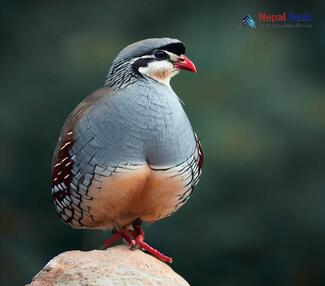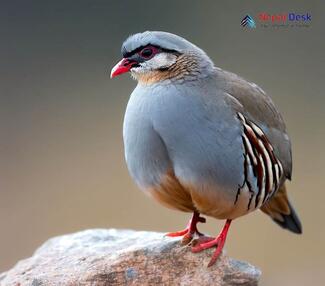Nepal is home to an incredible diversity of bird species, thanks to its unique landscapes and climate. One bird that particularly stands out is the Chukar Partridge (Alectoris chukar). This captivating bird can be found across the rugged terrain and high altitudes of this beautiful country. It is a Palearctic upland gamebird in the pheasant family Phasianidae. It has been considered to form a superspecies complex along with the rock partridge, Philby's partridge, and Przevalski's partridge and treated in the past as conspecific, particularly with the first. It is very similar to the rock partridge (Alectoris graeca) with which it has been lumped in the past but is browner on the back and has a yellowish tinge to the foreneck.
In this article, we will explore the fascinating world of the Chukar Partridge and its remarkable adaptation to life in Nepal's challenging environment.
Adaptations for Life at High Altitude
The Chukar Partridge is a ground-dwelling bird native to the mountains of Nepal and other parts of Asia. Remarkably, it can thrive at altitudes of up to 13,000 feet. To survive in such harsh conditions, the Chukar Partridge has developed some impressive adaptations. Its strong legs and sharp claws help it navigate rocky terrain with ease, while its sturdy body allows it to endure the cold temperatures and harsh winds.
Diet and Foraging Behavior
Chukar Partridges are primarily herbivorous birds, feeding on a variety of plants, seeds, and insects. They have a keen sense of taste, allowing them to locate their favorite foods even under snow or among rocks. Additionally, chukars will occasionally eat berries and small fruits when available. These birds have a unique habit of scratching the ground to uncover hidden food sources while foraging.
Mating and Breeding Habits
The Chukar Partridge has an interesting mating system, engaging in both monogamous and polygamous relationships depending on the availability of mates and territories. Males are known for their enchanting mating calls, which they use both for communication and attracting females during the breeding season.
Chicks hatch after about 23 days, making them precocial birds – able to leave the nest soon after hatching. The Chukar Partridge's parental care plays an essential role in the survival of their offspring. Both parents work cooperatively to ensure the safety and well-being of their chicks, often fiercely defending them from predators.
Conservation Status and Human Interactions
Fortunately, the Chukar Partridge is classified as the least concern on the IUCN Red List, meaning it is not currently facing any significant threats to its population. Due to their adaptability, these birds can thrive in areas disturbed by humans, such as agricultural fields and even urban environments.
Moreover, Chukar Partridges have been introduced to various places worldwide for game bird hunting purposes. In Nepal, they are respected inhabitants of the natural landscape and are admired for their striking appearance and resilience.
Conclusion
The Chukar Partridge is a fascinating bird species that demonstrates incredible adaptability, living in some of Nepal's most challenging environments. Its unique mating habits, remarkable foraging behaviors, and captivating appearance make it an intriguing subject for bird enthusiasts and nature lovers alike. As you explore the wonders of Nepal's diverse wildlife, keep an eye out for this exceptional avian treasure.




